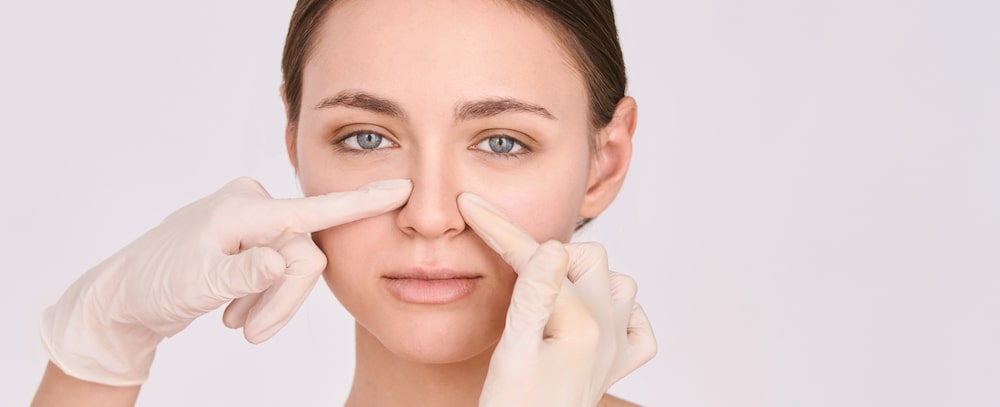
Rhinoplasty, which is a procedure that is also often referred to as a “nose job,” is a cosmetic surgery that reshapes or resizes the nose of a patient. The purpose of rhinoplasty is to create a more aesthetically pleasing nose and facial profile or to improve a functional aspect of the nose (such as breathing).
GOOD CANDIDATES for rhinoplasty include:
The following patients are NOT GOOD CANDIDATES for rhinoplasty:
Anesthesia is always the first step in any rhinoplasty procedure. After that, there are generally two ways to perform rhinoplasty. These rhinoplasty methods are closed rhinoplasty and open rhinoplasty:
While it is sometimes possible to combine other procedures with rhinoplasty, most surgeons opt to perform rhinoplasty alone as it is an especially challenging and painstaking procedure.
The average cost of rhinoplasty hovers around $5000. The ultimate cost of the procedure may change based on several factors including the type of rhinoplasty surgery performed and the extent of the surgery.
Keep in mind that a higher demand for rhinoplasty can be based on geographic location, the experience of the surgeon, any surgical facility or hospital costs and other fees charged by the surgeon. If the patient requires rhinoplasty because of an obstructed airway or another breathing issue, health insurance may cover some or all of the surgery. Generally speaking, any surgery performed solely for aesthetic purposes will not be covered by insurance.
Specific timeframes for recovery and downtime will vary from patient to patient. In general, once the surgery is completed, patients will need to take it easy for the first few weeks and will likely wear a splint for at least a week. Along with packing and bandages, this will help protect the nose during the initial healing phase.
Patients will experience some pain, discomfort and swelling during these first few weeks. The surgeon will give post-op instructions detailing how to care for the surgical site. Be sure to follow these closely and take the appropriate medications. After a week or two, the surgeon will remove the splint and the patient will be able to see the initial results. Swelling will remain for some months which will contribute to the length of the healing process.
Overall, signs of change in the appearance of the nose will be extremely gradual. Although patients will be able to see a significant difference right away (usually when the splint is removed), the swelling will mask the complete picture for a significant amount of time. In fact, it may take up to a year to see the full results of a rhinoplasty procedure.
During this initial year, swelling will be rather continuous. Many patients notice that the swelling is worse in the morning and then reduces throughout the day. The patient will meet with the surgeon several times, during the initial period after the surgery, in order to assess the overall outcome of the procedure as well as discuss the results with the surgeon. If the patient wants to have any additional surgery, they will need to wait until the nose has healed completely before moving forward.
The surgeon will discuss the specific risks of the surgery at the consultation appointment and during the time leading up to the procedure. Although complications from rhinoplasty are rare, there are a few risks to be aware of:
Whether the goal is to correct an aesthetic issue or improve the ability of the patient to breathe, rhinoplasty can be a life-changing surgery. It is important to take the time to do proper research before undergoing this procedure. As stated above, rhinoplasty requires significant downtime and, as with any cosmetic procedure, it comes with certain risks.
The patient needs to be emotionally and physically prepared for the procedure and also maintain realistic and balanced expectations. When the person is ready to move forward, the next step is to find a surgeon they can trust. If possible, patients should narrow the search to surgeons in their area who have specific experience performing rhinoplasty. It is always good to take a look at their work performing rhinoplasty by viewing “before and after” pictures and reading reviews from actual patients.
Patients should meet with prospective surgeons for in-person consultations. At these appointments, patients need to be detailed about their expectations and bring photos of noses for examples of what they hope to accomplish. By keeping all of this in mind, they will be sure to find a skilled and experienced surgeon they can trust.